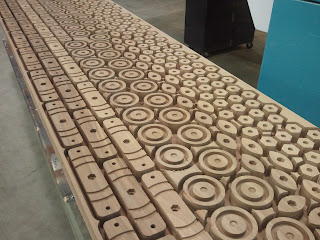Category Archives: How-To
Homesteader’s Supply Needs Your Help….
Hello to all of you.
We recently applied for a grant sponsored by Chase bank and LivingSocial Media worth $250,000.00, but we really need your help. You see, part of the requirements is to gain votes through social media outlets proving how valuable social media is to small business. We couldn’t agree more!!! We’ve met so many of you through facebook, google+ and twitter!
Part of the grant process is to earn votes… We need 250 votes to even be considered for this grant. Currently we have 44 and I’m eager to see if our customers, our readers and our friends can come together and help us accomplish this part. Once we get the votes, then it will be up to an independent panel to pick the businesses worthy of the funds. I’m hoping our grant application will earn us that chance!
Here’s how you can help… Please visit www.missionsmallbusiness.com and search for businesses in Chino Valley, Arizona or search directly for Homesteader’s Supply – be sure to use the apostrophe, then simply submit your vote.
I can’t begin to thank you enough for once agian being a part of what makes Homesteader’s Supply a special company!!!
Jerri, Nance and the rest of the “Folks at Homesteader’s Supply!!”
New Book on Fermenting Foods
Homesteader’s Supply has often given a “shout out” to Wardeh Harmon because we believe so strongly in what she does! The education she provides folks on the benefits of natural raw foods as well as the heath benefits of fermentation! And to continue our tradition… It’s our pleasure to carry and feature her newest book…
Fermenting Foods!
by Wardeh Harmon
2012 304 pages
Wardeh’s newest book about Fermenting Foods on the market today! Just published!
This book offers advice on the process of fermenting foods, providing information on how it works and the equipment required, and includes step-by-step instructions for making pickles, salsa, condiments, hummus, yogurt, and cheese.
This is the first series book to discuss the wonderful health benefits of live-culture foods and the techniques for preparing them.
Includes over 100 delicious recipes for all types of fermentation.
Check out her online class on fermenting and tell her jerri at Homesteaders Supply sent you!
http://gnowfglins.com/ecourse/classes/ferment
Biography:
Wardeh (‘Wardee’) Harmon lives in Southwest Oregon with her husband, Jeff, and their three children, Haniya, Naomi and Mikah. They raise a dairy cow, chickens and goats, and garden co-operatively with friends.
Besides homeschooling her children, making cheese, old-fashioned pickles and lots of other fermented foods, Wardeh teaches online classes in the fundamentals of traditional cooking, sourdough, cultured dairy, cheesemaking and lacto-fermentation at GNOWFGLINS eCourse (www.gnowfglins.com/ecourse). She blogs at GNOWFGLINS (www.gnowfglins.com) sharing recipes, videos and anecdotes of her family’s life.
GNOWFGLINS is an acronym to show how Wardeh and her family enjoy “God’s Natural, Organic, Whole Foods, Grown Locally, In Season.”
Making the Ultimate Cheese Press
We found an amazing wood worker who lives here in Chino Valley and owns a shop in Prescott, Arizona. They make beautiful furniture and cabinets. Jerri was on a mission to find someone to build cheese presses for Homesteader’s Supply. This gave us control over the wood type, control over the quality and consistency we expected from a cheese press.
We moved away from pine and into a hardwood in the Mahogany family. It’s naturally resistant to bacteria and washes up nicely with simple soap and water. We had it finished with 100% Tung Oil which is FDA approved for food contact.
So, what’s involved in making the cheese presses? This big plate of wood took six hours to cut. The grooves were added to the bar that holds the hoops in place to keep the hoops from slipping off to the side when tightening down the follower. The knobs were designed to be easy to grip and clean. The followers were given grooves for gripping when needing to pull it out of the follower. All of these designs were developed over time when testing prototypes. It was actually a very fun process!!! After six hours, the parts were ready to be sanded free from the small bit of wood that secured them to the slab. Once they are all free, they are sanded and oiled with three coats of Tung Oil. with plenty of drying time in between. Finally the stainless steel hardware is added and the hoops are cut and sanded until ultimately….. You have the Homesteader’s Supply Ultimate Cheese Press!!!!
 |
| Homesteader’s Supply Ultimate Cheese Press |
Straw Bale Gardening – Photo blog
I notice that this time of year folks start thinking about the garden… I notice the hits on the previous straw bale gardening articles goes way up and also noticed that they are a little short on photographs of the process. In this blog I will document in words and photos the garden from 2010 where I planted in bales of straw.
I went up to the feed store and picked out 20 straw bales. I arranged them in the pattern you see below. Knowing now what I didn’t know then… I’d lay them down on their side instead of standing them up like I did. They become a bit top heavy with plants growing up and holding fruits.

Next, I began the composting process. The recipe I found online called for one cup of 30-0-0 Ammonium Phosphate per bale on day one and 1/4 cup of the same fertilizer each day for 9 more days, followed by a good soaking with the hose. I could NOT find Ammonium Phosphate at any garden store so I settled for Sodium Phosphate (21-0-0) and it did the job just fine. Notice how much darker the sides of the bales are after 10 days of cooking. The insides of the bales have broken down a bit and are soggy and warm.
I took a few of the bales and cut out V grooves in there or dirt and plants… this was completely unnecessary and just bound up my chainsaw… Using a claw gardening tool made a big enough hole for the plant and some added growing material (compost). Again, the pulling out of straw below isn’t needed, just a coffee can size hole where your plant will live or sprinkle seeds on top of the bale and cover with dirt and straw works fine too.

Below is where I added soil to the V shapes I cut out. After I planted in the bale, I covered with some of the loose straw and soaked well..
Now it’s finally taking form!!! See the happy pepper plants spreading out their roots in their new home!
As you’ll see in the photos below it was a very successful adventure. As I said above, if I do this again, I’d turn the bales on the side for added stability. You can see below that some of the bales aren’t doing so well with top heavy plants. The cucumbers were alone the fence in the back for climbing. Peas and green beans didn’t do well in this growing medium… they are nitrogen fixers and in an already nitrogen rich environment, I didn’t enjoy very many peas. Lettuce, cucumber, tomitillo, cilantro, carrots, tomatoes, peppers all did very well.


I hope you find this helpful in your decision on growing in straw bales. It does save the back… but I will admit to growing in the ground the following year… I had to do something with all that composted straw so I pulled all of the twine and tilled it right into the Arizona clay…
Happy Homesteading!!!!
Nance
Homesteader’s Supply Pail Featured in Martha Stewart Magazine!!!
 Jerri was sitting at her desk, feverishly typing… stacks of paperwork to the right and left when suddenly… the phone rang,
Jerri was sitting at her desk, feverishly typing… stacks of paperwork to the right and left when suddenly… the phone rang,
“Homesteader’s Supply, this is Jerri…” she said into the phone…
“Hi Jerri, I’d like to order a 9 quart stainless steel pail to feature in March issue of Marta Stewart Magazine. We’re doing a ‘spring cleaning basics kit’ and I think your pail will be perfect to use in this project.” The friendly voice replied…
Well, needless to say, Jerri completed the order and here we are several months later… and indeed our pail was featured on Page 27 of Martha Stewart Magazine March 2012 Issue!!! Notice the ‘103 ways to get ready for spring” on the cover… one of those ways is with a spring cleaning kit using our pail!
We just had to share this great news, so I if you subscribe to Marta Stewart Magazine or pick one up at the local magazine stand… check out Page 27 and see how functional a good pail can be!
Happy Homesteading!!!!






